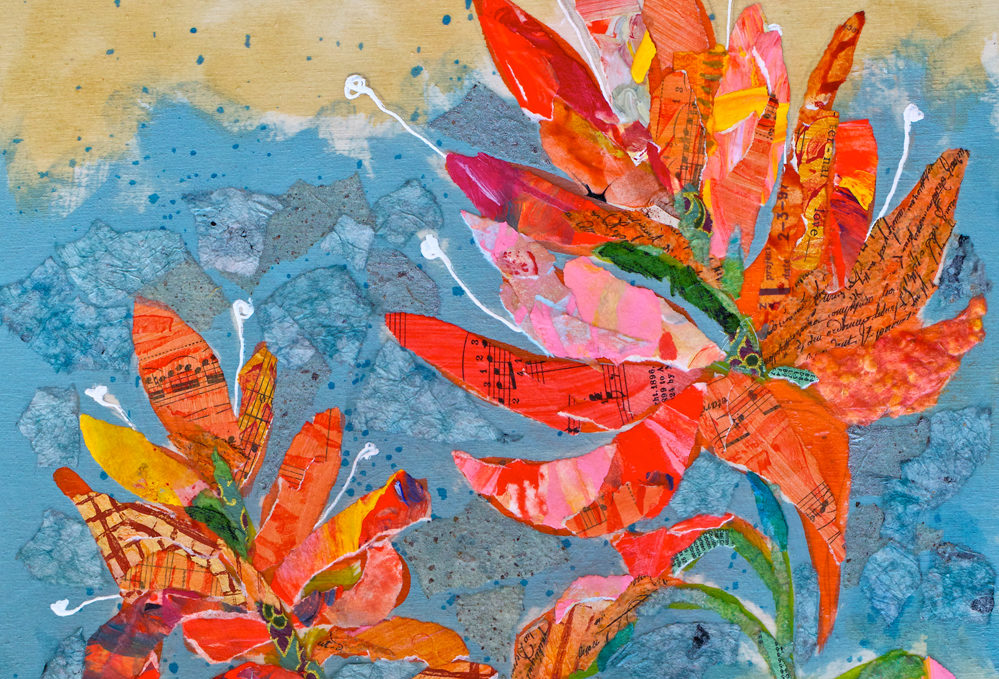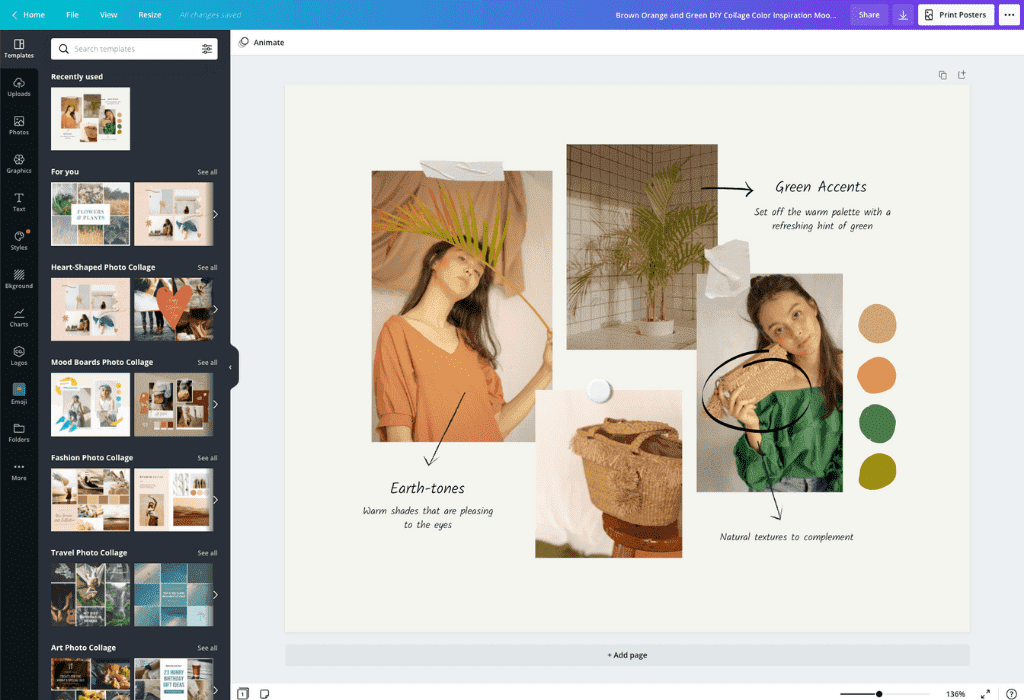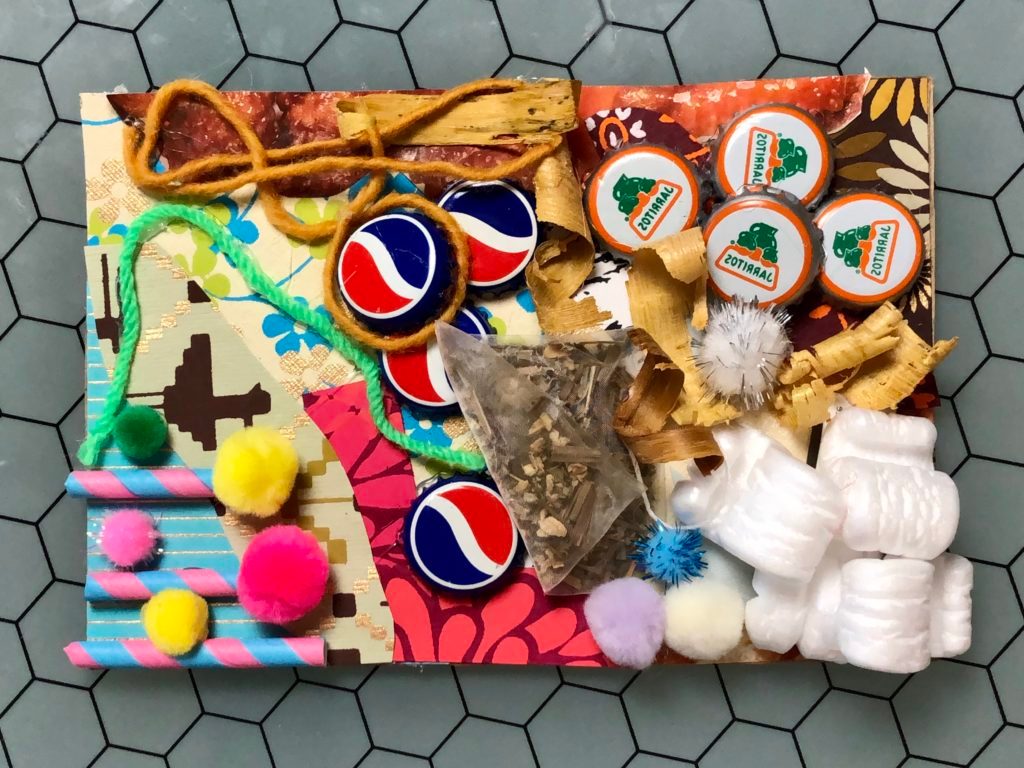Popular collage techniques include layering images for depth, using mixed media for texture and variety, incorporating text for added meaning, and creating photo mosaics by arranging small images to form a larger picture.
Unleash Your Creativity: Exploring the Top Collage Techniques
Collage art is a versatile and dynamic form of artistic expression that has been around for centuries. The term “collage” comes from the French word “coller,” which means “to glue.” In its simplest form, collage art involves the arrangement and pasting of various materials onto a surface to create a new and unique composition. Collage art can be created using a wide range of materials, including paper, fabric, photographs, found objects, and more. The possibilities are endless, and the only limit is the artist’s imagination.
Collage art has a rich history, with roots dating back to the early 20th century when artists such as Pablo Picasso and Georges Braque began incorporating collage techniques into their work. The Dada and Surrealist movements also embraced collage as a means of exploring the subconscious and challenging traditional artistic conventions. Today, collage art continues to be a popular and influential form of artistic expression, with artists around the world using the medium to create visually stunning and thought-provoking works of art.
Traditional Collage Techniques
Traditional collage techniques involve the use of physical materials such as paper, fabric, and found objects to create a composition. One of the most common traditional collage techniques is the use of paper cutouts, where the artist cuts out various shapes and images from magazines, newspapers, and other printed materials and arranges them on a surface to create a new composition. Another traditional collage technique is decoupage, which involves the layering of paper cutouts onto a surface and sealing them with a varnish or adhesive.
In addition to paper cutouts, traditional collage techniques can also involve the use of fabric, photographs, and found objects. Fabric collage, for example, involves the use of fabric scraps and textiles to create a composition, while photomontage collage involves the use of photographs to create a new image. Found object collage, on the other hand, involves the use of everyday objects such as buttons, beads, and other small items to create a three-dimensional composition. These traditional collage techniques offer a wide range of creative possibilities and allow artists to experiment with different materials and textures to create unique and visually striking works of art.
Digital Collage Techniques
With the advancement of technology, digital collage techniques have become increasingly popular among artists. Digital collage involves the use of computer software and digital images to create a composition. One of the key advantages of digital collage is the ability to manipulate and edit images with ease, allowing artists to experiment with different compositions and visual effects. Digital collage also offers a wide range of creative possibilities, with artists able to incorporate photographs, illustrations, and other digital elements into their compositions.
One of the most common digital collage techniques is the use of layers, where different images and elements are stacked on top of each other to create a new composition. Artists can also use digital brushes and filters to add texture and visual interest to their compositions. Another popular digital collage technique is the use of blending modes, which allow artists to combine different images and elements in unique and creative ways. Digital collage offers a modern and innovative approach to collage art, allowing artists to push the boundaries of traditional techniques and create visually stunning and thought-provoking works of art.
Mixed Media Collage Techniques
Mixed media collage techniques involve the use of a combination of different materials and techniques to create a composition. This can include the use of traditional materials such as paper, fabric, and found objects, as well as digital elements such as photographs and illustrations. Mixed media collage allows artists to experiment with different textures, colors, and visual effects, creating visually dynamic and engaging compositions.
One of the key advantages of mixed media collage is the ability to combine different materials and techniques to create a composition that is rich in depth and visual interest. Artists can use a wide range of materials, including paint, ink, and other art supplies, to add texture and dimension to their compositions. Mixed media collage also allows for a high level of creative freedom, with artists able to experiment with different combinations of materials and techniques to create unique and visually striking works of art.
Paper Cutting and Layering Techniques
Paper cutting and layering techniques are fundamental to the art of collage. Paper cutting involves the careful and precise cutting of paper to create shapes and images that can be used in a collage composition. This can include cutting out images from magazines and newspapers, as well as creating intricate designs and patterns using scissors or a craft knife. Paper layering, on the other hand, involves the stacking and arranging of paper cutouts to create a new composition.
One of the key advantages of paper cutting and layering techniques is the ability to create visually dynamic and engaging compositions. Artists can experiment with different shapes, sizes, and colors to create unique and visually striking works of art. Paper cutting and layering techniques also allow for a high level of creative freedom, with artists able to experiment with different combinations of paper cutouts to create compositions that are rich in depth and visual interest.
Photomontage Techniques
Photomontage techniques involve the use of photographs to create a new image or composition. This can include the cutting and pasting of photographs to create a new image, as well as the use of digital editing software to manipulate and combine different photographs. Photomontage collage allows artists to experiment with different compositions and visual effects, creating visually stunning and thought-provoking works of art.
One of the key advantages of photomontage techniques is the ability to create compositions that are rich in depth and visual interest. Artists can experiment with different combinations of photographs to create unique and visually dynamic compositions. Photomontage techniques also allow for a high level of creative freedom, with artists able to push the boundaries of traditional collage techniques and create compositions that challenge traditional artistic conventions.
Found Object Collage Techniques
Found object collage techniques involve the use of everyday objects and materials to create a three-dimensional composition. This can include the use of items such as buttons, beads, and other small objects, as well as the use of natural materials such as leaves and twigs. Found object collage allows artists to experiment with different textures, shapes, and colors, creating visually dynamic and engaging compositions.
One of the key advantages of found object collage techniques is the ability to create compositions that are rich in depth and visual interest. Artists can experiment with different combinations of found objects to create unique and visually striking works of art. Found object collage also allows for a high level of creative freedom, with artists able to push the boundaries of traditional collage techniques and create compositions that challenge traditional artistic conventions.
Abstract Collage Techniques
Abstract collage techniques involve the use of shapes, colors, and textures to create compositions that are non-representational and free from traditional artistic conventions. This can include the use of geometric shapes, bold colors, and expressive brushstrokes to create visually dynamic and engaging compositions. Abstract collage allows artists to experiment with different combinations of shapes and colors, creating compositions that are rich in depth and visual interest.
One of the key advantages of abstract collage techniques is the ability to create compositions that are open to interpretation and invite the viewer to engage with the work on a deeper level. Artists can experiment with different combinations of shapes and colors to create unique and visually striking works of art. Abstract collage also allows for a high level of creative freedom, with artists able to push the boundaries of traditional collage techniques and create compositions that challenge traditional artistic conventions.
Surrealist Collage Techniques
Surrealist collage techniques involve the use of dreamlike and fantastical imagery to create compositions that explore the subconscious and challenge traditional artistic conventions. This can include the use of unexpected combinations of images and elements, as well as the use of visual distortions and manipulations to create compositions that are surreal and thought-provoking. Surrealist collage allows artists to experiment with different combinations of images and elements, creating compositions that are rich in depth and visual interest.
One of the key advantages of surrealist collage techniques is the ability to create compositions that are open to interpretation and invite the viewer to engage with the work on a deeper level. Artists can experiment with different combinations of images and elements to create unique and visually dynamic compositions. Surrealist collage also allows for a high level of creative freedom, with artists able to push the boundaries of traditional collage techniques and create compositions that challenge traditional artistic conventions.
Collage as a Therapeutic Tool
Collage art has long been recognized as a powerful therapeutic tool, with the process of creating collage compositions offering a wide range of emotional and psychological benefits. Collage art allows individuals to express themselves in a non-verbal and visual way, providing a means of communication and self-expression. The process of creating collage compositions can also be meditative and calming, allowing individuals to focus on the present moment and engage in a creative and fulfilling activity.
In addition to its therapeutic benefits, collage art can also be used as a tool for self-discovery and personal growth. The process of creating collage compositions can help individuals explore their thoughts, feelings, and experiences, providing a means of reflection and introspection. Collage art can also be used as a tool for building self-esteem and confidence, allowing individuals to express themselves in a safe and supportive environment.
In conclusion, collage art is a versatile and dynamic form of artistic expression that offers a wide range of creative possibilities. Whether using traditional, digital, mixed media, or found object techniques, collage art allows artists to experiment with different materials and techniques to create unique and visually striking works of art. Collage art also has the potential to be a powerful therapeutic tool, offering individuals a means of self-expression, reflection, and personal growth. As collage art continues to evolve and inspire artists around the world, its impact on the art world and beyond is sure to be profound.
Originally posted 2024-05-24 00:38:07.




